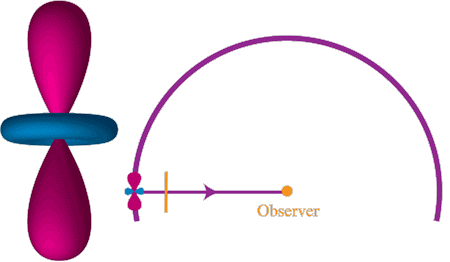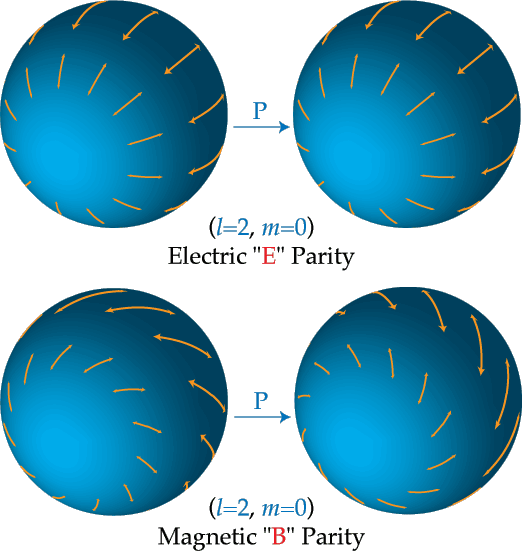

The projection cold (red) lobe of the quadrupole moment of the temperature anisotropy at last scattering (recombination or reionization) transverse to the line of site deterines the polarization magnitude and direction. Here the effect of a scalar or density perturbation is shown. Note the azimuthal symmetry of the pattern.
Polarization patterns can be decomposed into the E and B modes which are polarization analogues of the curl free and divergence free parts of vectors.
E and B modes have opposite behavior under a parity transform corresponding to the B modes having a polarization direction (north-west to south-east and north-east to south west) that is 45 degrees from the principal axis for its amplitude variation (north-south).

Unlike the scalar mode, vectors (vorticity) and tensors (gravitational waves) carry extra directional information that breaks the symmetry of a pure E mode and stimulates a B mode.

Here the tensor quadrupole (right) is compared to the scalar quadrupole (left) rotating in projection from the equator to the pole and back as in the first figure. Note the breaking of the north-south azimuthal symmetry.